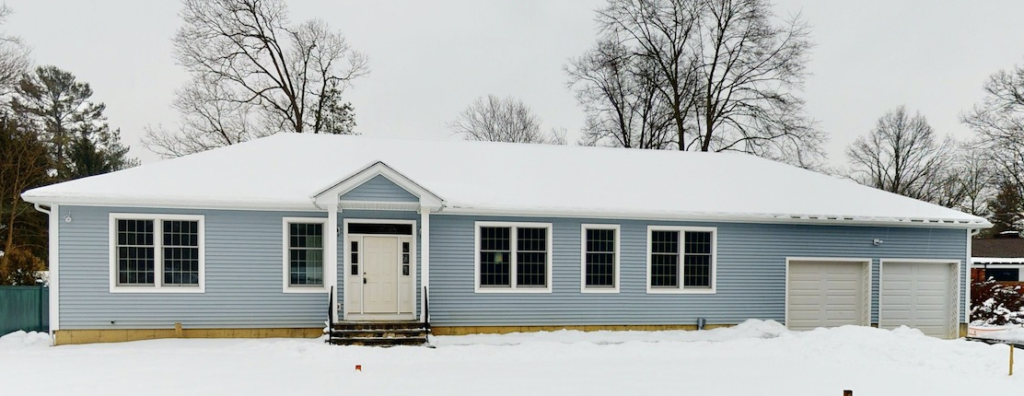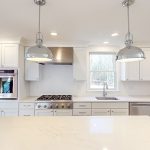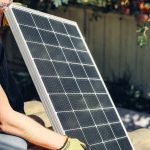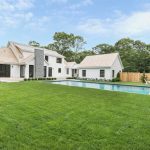Winterizing Your Modular Home

Modular homes are similar to conventionally-built homes in that you need to prepare for the winter months and cold weather. From plumbing to insulation, we are sharing tips to prepare your home to avoid costly home repairs and maintain energy efficiency.
Preventing Water Damage During the Winter
Water expands as it turns to ice so a frozen pipe is prone to bursting which can result in expensive water and plumbing damage.
Per Forbes magazine, “Water damage (including damage from freezing) is one of the most common and most costly types of homeowners insurance claims. Every year, about one in 50 homeowners file a water damage or freezing claim, accounting for 29% of all homeowners’ insurance claims, according to the Insurance Information Institute. The average cost of a water damage or freezing claim is $11,098.”
How do you avoid such costly issues in your home? First, pipes in exterior walls and those in unheated or uninsulated places are the most at risk. So, it makes sense to prioritize outdoor hoses.
Disconnect Garden Hoses
When temperatures start to drop, it is time to disconnect, drain and store your outdoor hoses. Close any shut-off valves that supply the hose bibs and open the faucets to drain. Keep the faucet open during the winter to allow space for any water that may still be in the pipe to expand. You may also want to purchase faucet covers. For sprinklers, drain the water and follow the manufacturer’s instructions for turning the sprinkler system off for the winter.
Insulate Pipes
Pipes in unheated areas such as the attic or garage are particularly at risk. Pipe insulation is widely available and inexpensive. Apply insulation to pipes at risk.
Seal air leaks
One of the benefits of a modular home is that it is built air-tight. That said, it is a good idea to inspect all homes for any openings that can let in cold air. Seal any areas that can let in cold air.
Clean Gutters
It is also a good idea to clean your gutters every season, but particularly in winter. If gutters are clogged then snow and ice can build up and even detach the gutters from the home. Built-up snow and ice can also cause water damage once a thaw starts.
Watch the temperature
Modular homes are particularly energy efficient which is great news for modular homeowners. The factory-controlled setting means that insulation application, during the time the home is being built, is far more controlled than in a typical stick-built home.
That said, you will still want to ensure the interior of your home doesn’t get too cold as exterior temperatures drop – at the very minimum, the heat should turn on before it dips to 50 degrees Fahrenheit inside. If you are leaving your home for a while, it is important to keep a vacant house at a temperature well above freezing – typically the standard is between 50 and 60 degrees Fahrenheit.
Transforming your home for winter is an important part of keeping you safe and your home protected. Interested in learning more about why a modular home is often better suited to winter than traditionally constructed homes? Contact us and we would be happy to discuss it!







